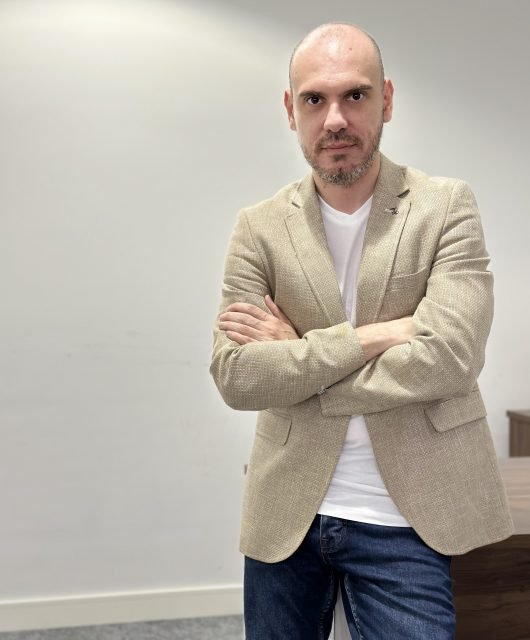Dear CMOs And Brand Managers, Here’s Why You Shouldn’t Disregard Sonic Branding
By Charles Gadsdon, Global Director of Growth at international creative music agency MassiveMusic

A few weeks ago, I was on a Zoom call and one of the attendees’ phones chimed with a notification. Message received. “WhatsApp”, their colleague said straight away. We laughed a bit. After he apologised and put his phone on mute, I said: “Isn’t it powerful that in less than one second, without seeing any visuals, people knew who the brand was, what the brand was doing and gave you that feeling?” That is sonic branding.
“A holistic approach to a brand’s use of music and sound across all relevant touch points.” And whether you call it audio branding or sound branding, the result doesn’t change.
In this fractured and crowded media landscape, brands are increasingly remembered by customers as a selection of memories, stories and experiences.
Sonic branding is way more than a catchy 3-5 second sonic logo. It’s a unique and ownable sound world for a brand. I’m sure it wouldn’t take much for you to recognise or even reproduce the sonic logos of Intel or McDonald’s.
Yet, out there, there’s a list of brands that, in the last few years, have effectively adopted sonic branding as a strategic approach when building their brand equity: Coca-Cola, Apple, Mastercard, Twitter, O2, Philips, just to name a few.
These brands have acknowledged that their visual identity, tone of voice, typography and photography needed two other allies by their side: music and sound.
The process is very similar to the design process: you have the research phase followed by the production phase and, finally, the rollout phase. The reason is we believe that a sonic identity should be given the same attention as a visual identity. At the very best, the two identities should go hand in hand and elevate each other.
But how do you know what sonic brand assets you need as a brand?
For sonic branding to be effective, a brand should always think of what is getting the most exposure and start from there. The sonic identity could include a brand theme and a sonic logo, which is a derivative of the theme itself, as well as 1-2 adaptations to use, depending on the variety of touchpoints that the brand intends to cater to – from online content and event launches to broadcast and UX/UI sounds.
From the increase of brand strength and recall to cost and time savings, a strategic sonic brand identity has many benefits for the brand and its audience. After all, music is a sure gateway to emotions. Hearing is the second sense we develop, after touch, thanks to the heartbeat of our mother when we’re in the womb.
Not to mention that sound reaches our brain 17% faster than visuals. It didn’t come as a surprise to us when the recent Ipsos report found that, while less frequently used, audio assets are, on average, more effective than some visual assets. This is becoming even more pertinent as we move further into the screenless age with the rise of smart speaker tech where visual stimuli are non-present.
And it’s not only that – there are lots of studies, that you can find online, that prove the power of sound. In our industry, we often talk about how to drive the emotional connection with a brand and to increase brand trust. All of this has been used in music for much longer than algorithms and AI have been around!
At MassiveMusic, we intend to work with the world’s bravest brands out there because we believe that there should always be a strategic and consultative approach behind the creative. Like the relationship between a football manager and a striker. The striker can score goals – sure, but, unless he’s being placed in the right position and the other players are supporting him with a tactic that plays to his strengths, he won’t score goals. Every little move is leading up to the goal.
Creating a two-note chime for a one-off campaign won’t work, because it doesn’t help build the brand and it certainly doesn’t drive recall. In fact, it’s wasting an opportunity to do something meaningful.
Music and sound are relevant for pretty much every industry. In the past we worked with Ithra, also known as The King Abdulaziz Center for World Culture – an architectural marvel situated in the middle of the desert near Dhahran, Saudi Arabia. We took inspiration from both the organic and pioneering new materials used to build the center and created a unique sound world that engages and delights visitors at every opportunity. Thanks to that, The Sound of Ithra now sits across all their communication touchpoints driving quality and recall.
For The Sound of Tadawul, the sole stock exchange of The Kingdom of Saudi Arabia, we created a sonic suite that consists of both long- and short-form sound assets for use in different touchpoints (from B2B events to even a ringtone), specifically designed with both heritage and innovation in mind.
If there was ever a brief that could excite MassiveMusic, it would be to create the sound of transport for cities – something we did with The Sound of RTA, Dubai’s Roads & Transport Authority. The deployment of the creative and strategy is going to be heard by many generations. Every day, millions of people use the public transport of Dubai – in this case, the sonic identity acts in a way that is both functional (to travel the city in all safety) and emotional (to increase recall and build trust).
For CMOs, one of the busiest functions that exists in the modern business world, it can be challenging to have such a multifaceted (sonic) world added to their plate. Yet, it would be a missed opportunity to disregard an emotional trigger like music, too much of an important asset for the brand they’re taking care of, especially considering they’re responsible for facilitating growth.
When I ask those in the C-suite how much a brand is spending on music per year, I’m yet to find someone who can give me a straightforward answer. We are told that music is an essential part of storytelling and they’re happy to spend €1m to license a famous song that will make a commercial go viral and win awards! I hear this every year for almost every brand, with money being burned at the expense of the brand’s team hard work, strategy and pitches.
My suggestion? A strategic approach to sound is the most cost-effective and long-lasting return on investment that you can deploy. It doesn’t cost as much money as borrowing fame from music icons – plus, it has a massive increase of quality and adaptability if you compare it to stock music options. Some brands will always license famous music as part of their strategy and that’s fine too. For everyone else, there is a much more cost-effective alternative.
The brave CMOs take calculated risks, save money over time, drive recall to the brand, ensure consistency across all communications and, ultimately, create a legacy for the brand (and themselves) even after they leave the brand. I personally look forward to the next generation of CMOs putting music on their priority list.





